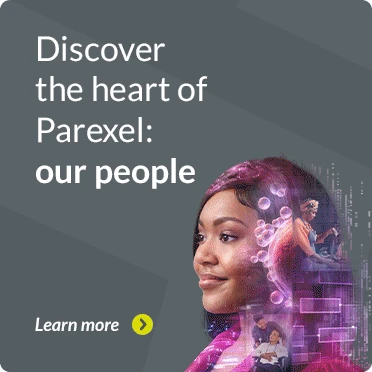Breaking through complex regulations and science speak – thinking “patients first” in lay language summary development
While lay language summaries of clinical study results have specific regulatory requirements that must be fulfilled, it is also important not to lose sight of the specific communication needs of the intended target audiences. In a session presented at the 2021 Clinical Data Disclosure, Transparency and Plain Language Summaries Virtual Congress in May 2021 and to the European Medical Writers Association as an encore session, we explored how to develop multi-purpose, patient-centric lay language summaries with the patient audience firmly in mind.
Seeing it from the perspective of the lay audience
Understanding the layperson’s and/or patient perspective and finding out how they want to receive information is a first critical step. The 2019 CISCRP survey on Patient Experience and Engagement Preferences1 highlighted the continued lack of feedback of study results to study participants. One fourth of study participants reported that they had never received an update on their study results. However, there was still a strong desire for a lay language summary of these results, but a real unmet need in this area.
The format of lay language summaries was also important to survey respondents – with older age groups preferring an emailed summary and younger age groups preferring either a more interactive format, for example, results via a webinar or in a TC with the study doctor.
Key considerations for lay language summary development
For a lay language summary to be multi-purpose and patient-centric, it must first align with Article 37 of the EU Regulation 536/2014.2 This requires the sponsor to submit a written summary to the EU database that is understandable to laypersons, irrespective of the outcome of a clinical trial.
Once the regulatory box has been checked, you still need to develop the content with patients in mind – with clarity through simplicity and compelling design and visualization. The use of simple, everyday language coupled with providing a translated lay language summary in the recipient’s native language are key considerations for improved understanding and patient empowerment. Health literacy principles must flow through the content to be as inclusive to as many audiences as possible.
Simplifying and visualizing data in the form of diagrams, charts, and tables aids lay audience understanding and can be used to break up text-heavy pages. It’s also important to consider the ratio of color-coding, shading, and white space to make lay language summaries more engaging.
Supporting your diverse lay audiences should be done with empathy and wisdom – for example, visually impaired audiences and parents and children have different needs. Consider larger fonts and well-contrasting backgrounds for those with degenerative eye conditions; parents and children may respond well to simple, cartoon-style designs and engaging characters, which can guide them through the lay language information being presented.
Choosing a partner with the right skills
Parexel is uniquely to provide an exceptional combination of medical writing and patient communications expertise. Our medical writers are experienced in interpreting study results and authoring clinical documents with scientific accuracy, while our patient communications experts are skilled at developing quality, simplified content uniquely tailored to each target audience.
To learn more visit Medical Communications | Medical Communication Services | Parexel
1. https://www.ciscrp.org/ciscrps-2019-perceptions-and-insights-study/
Related Insights
Blog
Highlights from ISMPP Asia Pacific Meeting 2021
Sep 20, 2021
Blog
Celebrating 40 Years of Rare Disease Progress: WODC Highlights
Jun 6, 2023
Article
Three ways to work with the FDA for better patient-focused trials
Jul 29, 2021
Video
Part 2: Risk-based Quality Management Video (RBQM) Series
Nov 11, 2021
Report
New Medicines, Novel Insights: Accelerating development of cell and gene therapies
May 22, 2023
Report
New Medicines, Novel Insights: Advancing rare disease drug development
May 22, 2023
Article
3 ways to incorporate DE&I in your communications strategy
Sep 29, 2021
Video
Creating EU-CTR compliant and patient-friendly lay language summaries (LLS)
Jan 26, 2022
Blog
Including patients in DCT design
Sep 13, 2022
Article
Relyvrio Approval: Lessons Learned
Oct 31, 2022
Article
Q&A Project Optimus: What you need to know
Oct 11, 2022
Blog
Inclusion for all: Expanding trial accessibility for transgender and nonbinary patients
Sep 23, 2022
Related Insights
Blog
Highlights from ISMPP Asia Pacific Meeting 2021
Sep 20, 2021
Blog
Celebrating 40 Years of Rare Disease Progress: WODC Highlights
Jun 6, 2023
Article
Three ways to work with the FDA for better patient-focused trials
Jul 29, 2021
Video
Part 2: Risk-based Quality Management Video (RBQM) Series
Nov 11, 2021
Report
New Medicines, Novel Insights: Accelerating development of cell and gene therapies
May 22, 2023
Report
New Medicines, Novel Insights: Advancing rare disease drug development
May 22, 2023
Article
3 ways to incorporate DE&I in your communications strategy
Sep 29, 2021
Video
Creating EU-CTR compliant and patient-friendly lay language summaries (LLS)
Jan 26, 2022
Blog
Including patients in DCT design
Sep 13, 2022
Article
Relyvrio Approval: Lessons Learned
Oct 31, 2022
Article
Q&A Project Optimus: What you need to know
Oct 11, 2022
Blog
Inclusion for all: Expanding trial accessibility for transgender and nonbinary patients
Sep 23, 2022







